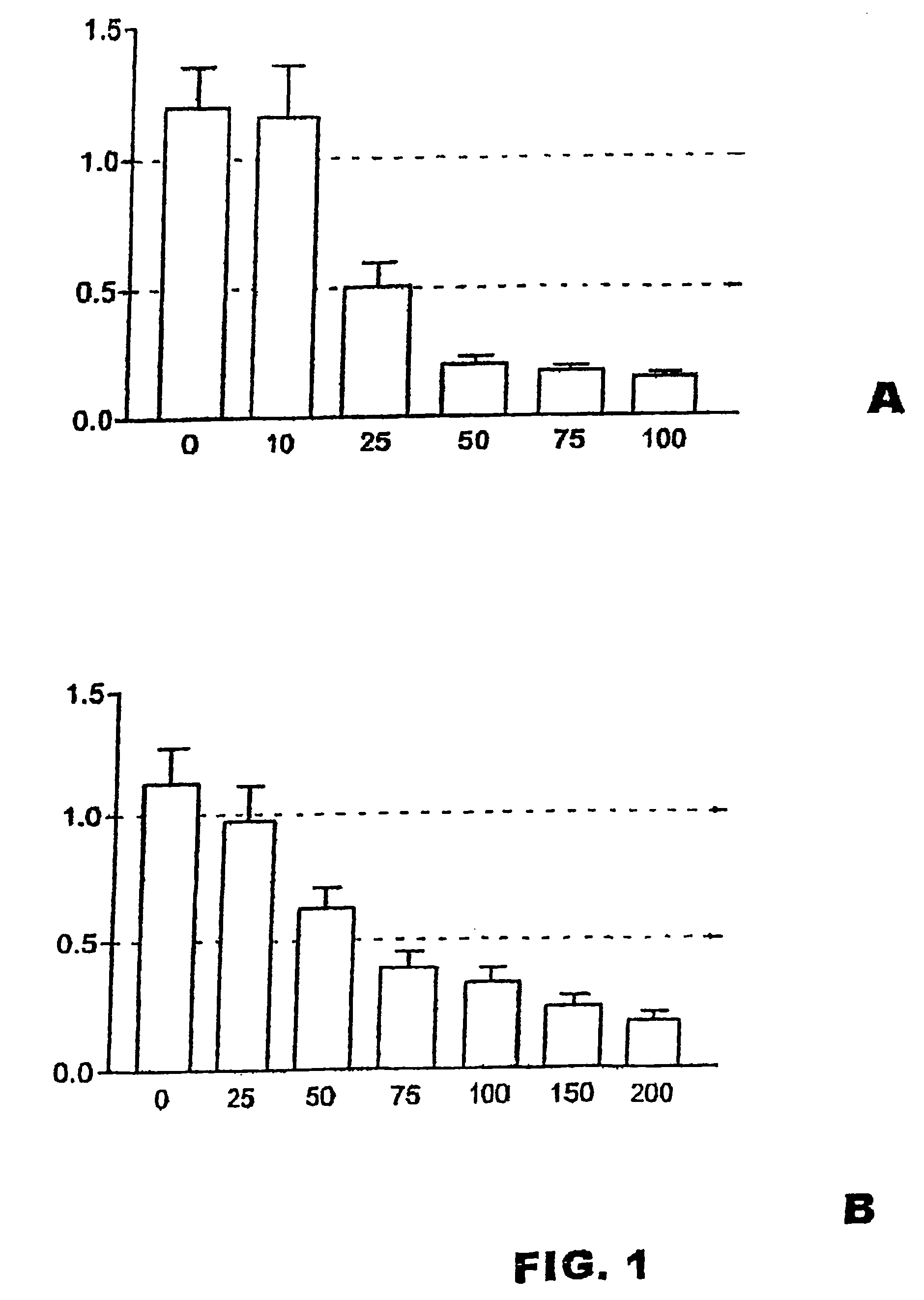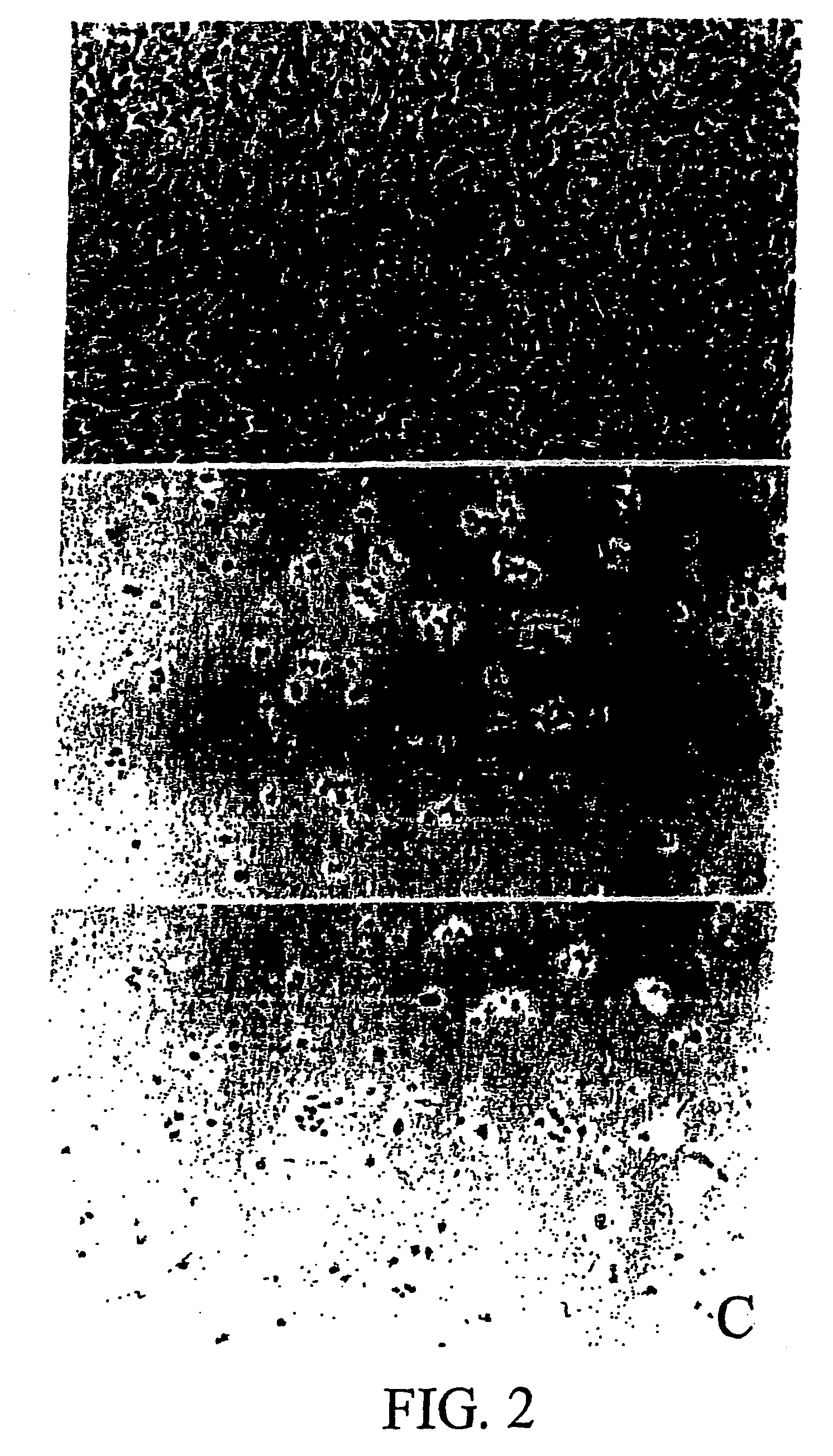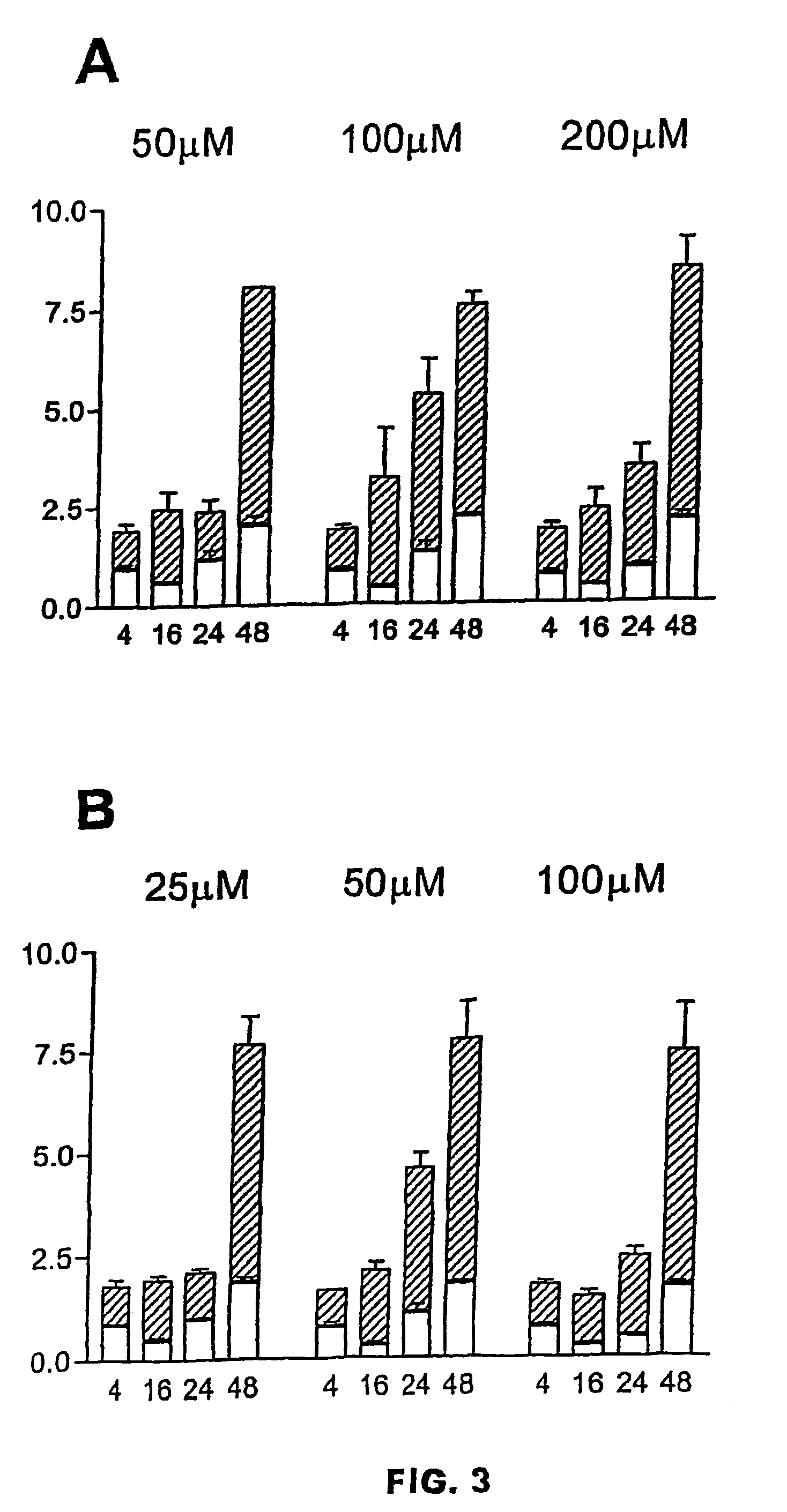Use of 2,5-dihydroxybenzenesulphonic acid in the production of medicaments for the treatment of angiodependent diseases such as cancer and psoriasis
a technology of benzenesulphonic acid and 2,5-dihydroxybenzenesulphonic acid, which is applied in the direction of biocide, cardiovascular disorder, drug composition, etc., can solve the problems of no curative treatment for psoriasis, obvious pharmacological inconveniences,
- Summary
- Abstract
- Description
- Claims
- Application Information
AI Technical Summary
Benefits of technology
Problems solved by technology
Method used
Image
Examples
example 1
Illustrative Assay of the Anti-Proliferative Ability of the 2,5-Dihydroxybenzenesulfonic Acid
[0015]This in vitro study was carried out in three different triplicate experiments with rat gliomic cells (C6 line). The cells were cultured in a medium formed by DMEM Dulbecco's modified Eagle's Medium (Gibco. Paisley UK), 7.5% of fetal serum (Gibco) 10 units / ml of penicillin (Gibco) and 10 μg / ml of streptomycin (Gibco). The cultures were kept in a humid atmosphere at 37° C. To evaluate the effect of the 2,5-dihydroxybenzenesulfonic acid on the cell proliferation, 2×104 C6 cells per well were seeded in 24-well (15 mm of diameter) plates. The experimental cultures were treated during 48 hours with different micro molar concentrations (μM) of the compound (calcium or potassium salt of the 2,5-dihydroxybenzenesulfonic acid). The control cultures lived 48 hours, without adding the compound. Photographs of the cultures were taken after 48 hours using an inverted microscope and then, the culture...
example 2
Illustrative Assay of the Proapoptotic Ability of the 2,5 Dihydroxybenzenesulfonic Acid
[0016]This assay was carried out with C6 cells cultured in vitro according to the procedure described in example 1. To demonstrate the proapoptotic effect of the analyzed compounds we have used two different methods that detect the intracellular fragmentation of the DNA and the apoptotic nuclei in situ.
Detection of the Intracellular Fragmentation of the DNA.
[0017]The enzymatic immunoassay methods to quantify the DNA fragments associated to histones may be considered suitable to determine the onset of apoptosis (Aragane Y et al. J Cell Biol 1998; 140: 171-182). This method allows to differentiate death due to necrosis from death due to apoptosis since in necrosis the cytoplasmic membrane is fragmented and the DNA appears in the culture medium, while in apoptosis, the fragmented DNA remains in the interior of the cell because the plasma membrane remains intact (Aragane Y et al. J Cell Biol 140: 171-...
example 3
Illustrative Assay of the Ability of the 2,5-Dihydroxybenzene Sulfonic Acid in Potentiation of Chemotherapy
[0028]We used for this study C6 cells cultured in vitro under the same conditions described in example 1.1×103 cells per well were cultured in 24-well plates. Three types of treatment were made: a) 24 hours after the seeding, the cells were separately treated with each one of the following medicines; cisplatin (5 μg / ml), vincristine (0.1 μg / ml), paclitaxel (5 μg / ml) and 5-fluorouracil (100 μg / ml); b) 24 hours after the seeding, the cells were treated jointly with the 2,5-dihydroxybenzenesulfonic acid (potassium salt, 100 μM) and with each one of the following medicines; cisplatin (5 μg / ml) vincristine (0.1 μg / ml), paclitaxel (5 μg / ml) and 5-fluorouracil (100 μg / ml); c) at the time of the seeding (Day 0), the cells were pre-treated with the 2,5-dihydroxybenzenesulfonic acid (potassium salt, 100 μM). Next day the cultures were treated also with each one of the following medicines...
PUM
| Property | Measurement | Unit |
|---|---|---|
| volume | aaaaa | aaaaa |
| diameter | aaaaa | aaaaa |
| pH | aaaaa | aaaaa |
Abstract
Description
Claims
Application Information
 Login to View More
Login to View More - R&D
- Intellectual Property
- Life Sciences
- Materials
- Tech Scout
- Unparalleled Data Quality
- Higher Quality Content
- 60% Fewer Hallucinations
Browse by: Latest US Patents, China's latest patents, Technical Efficacy Thesaurus, Application Domain, Technology Topic, Popular Technical Reports.
© 2025 PatSnap. All rights reserved.Legal|Privacy policy|Modern Slavery Act Transparency Statement|Sitemap|About US| Contact US: help@patsnap.com



